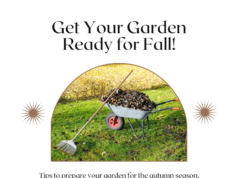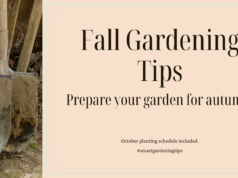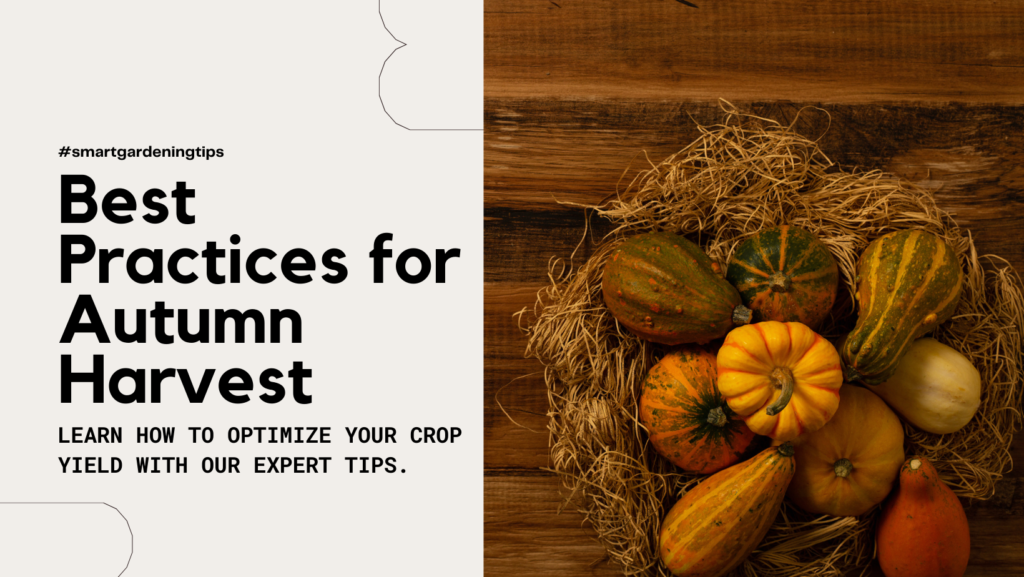
Welcome to our guide on achieving a bountiful autumn harvest! Whether you’re a seasoned gardener or a beginner, this article will provide expert tips and techniques to help you make the most of this abundant season. From crop selection and soil maintenance to preservation techniques, we’ve got you covered. Let’s dive in and unlock the secrets to a successful autumn harvest!
Key Takeaways:
- Choose the right crops for your autumn harvest to ensure optimal yields.
- Proper soil preparation and maintenance are crucial for a thriving harvest.
- Utilize efficient harvesting techniques and essential tools for different crops.
- Explore various methods for preserving your harvested produce to maintain freshness.
- Follow proper storage techniques to extend the shelf life of your crops.
Understanding the Autumn Harvest Season
Before diving into the best practices for achieving a bountiful autumn harvest, it’s crucial to understand the significance of this season and the climate and conditions necessary for success. Let’s explore the definition and importance of the autumn harvest as well as the factors that contribute to a thriving harvest during this time.
The autumn harvest, also known as the fall harvest, refers to the process of gathering mature crops from the fields in preparation for consumption or storage. It is a crucial time for farmers and gardeners as it allows them to reap the rewards of their hard work throughout the year.
The significance of the autumn harvest goes beyond just obtaining a plentiful yield. It is a celebration of nature’s abundance and a time to be grateful for the nourishment it provides. It also symbolizes the cycle of life and the rhythm of nature, as crops are harvested before the onset of winter when growing conditions become less favorable.
Successful autumn harvesting relies heavily on the climate and conditions during this season. While specific requirements may vary depending on the crop, there are some general factors to consider.
Climate:
The autumn harvest season typically occurs between September and November in many regions. The climate during this time varies, but it often includes cooler temperatures, mild to moderate rainfall, and shorter daylight hours. These conditions create an optimal environment for the maturation of crops and contribute to their flavor and quality.
Conditions:
In addition to the climate, various conditions play a role in the success of autumn harvesting. Adequate sunlight, proper irrigation, and well-draining soil are crucial factors for most crops. Additionally, frost dates are important to consider, as some crops can tolerate light frost while others may need to be harvested before the first frost to prevent damage.
“Autumn is a second spring when every leaf is a flower.” – Albert Camus
Understanding the definition and significance of the autumn harvest season, as well as the climate and conditions required for a successful harvest, lays the foundation for implementing effective practices. In the following sections, we will explore crop selection, soil preparation, harvesting techniques, and preservation methods to help you achieve a fruitful autumn harvest.
Crop Selection and Timing for Autumn Harvest
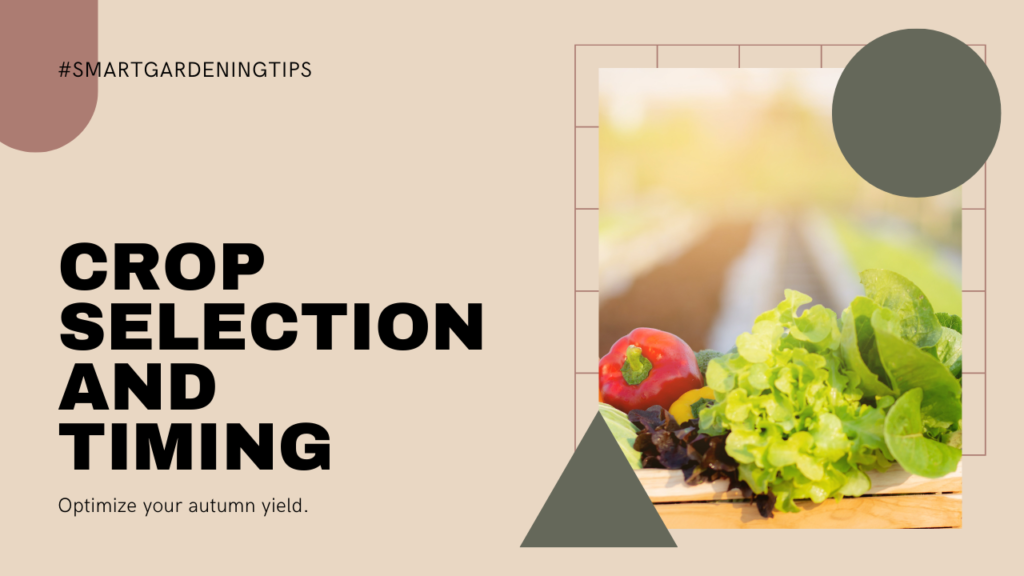
Selecting the right crops and planting them at the optimal time is crucial for a successful autumn harvest. By choosing the appropriate crops and carefully planning their timing, you can maximize your yields and ensure a bountiful harvest.
When it comes to crop selection, consider the specific conditions of your region and the climate during the autumn season. Some crops thrive in cooler temperatures, while others are more suited for warmer climates. Researching and understanding the ideal growing conditions for different crops will help you make informed choices for your autumn harvest.
Additionally, take into account the length of your growing season when selecting crops. Some crops require a longer growing period and may not be suitable for autumn harvest if the season is too short. It’s important to choose crops that can reach maturity within the available time frame to achieve optimal yields.
Timing is another crucial aspect of a successful autumn harvest. Planting your crops at the right time ensures proper development and growth. Consider the average first frost date in your region and work backward to determine the ideal planting time for each crop. This approach allows you to optimize the growing period and avoid potential damage from early frosts.
Creating a planting schedule or calendar can be a helpful tool for managing crop selection and timing. This allows you to track the optimal planting dates for different crops and ensures that you stay organized throughout the autumn planting season.
Keep in mind that different crops have specific requirements for soil type, sunlight exposure, and water needs. Take these factors into consideration when selecting crops and make sure they align with the conditions available in your garden.
| Crop | Ideal Planting Time | Soil Type | Water Needs |
|---|---|---|---|
| Lettuce | 4-8 weeks before the first frost date | Loamy, well-draining | Regular, even moisture |
| Broccoli | 10-12 weeks before the first frost date | Rich, fertile | Adequate moisture |
| Carrots | 8-10 weeks before the first frost date | Loamy, loose | Even moisture, well-drained |
| Spinach | 6-8 weeks before the first frost date | Well-drained, fertile | Regular watering |
By considering crop selection and timing, you can ensure that you choose the right crops for your autumn harvest and plant them at the optimal time for optimal yields.
Soil Preparation and Maintenance for Autumn Harvest
Proper soil preparation and maintenance are crucial for ensuring a successful autumn harvest. By preparing the soil adequately and implementing effective maintenance strategies, you can create an optimal environment for your crops to thrive. Here, we will discuss the steps involved in preparing the soil for autumn planting and provide techniques for maintaining soil health during the harvest season.
Preparing the soil for autumn planting starts with clearing away any debris or weeds from the previous season. Remove any dead plants and weeds to minimize competition for nutrients and ensure a clean planting area. Loosening the soil with a garden fork or tiller will promote better drainage and allow roots to penetrate the soil more easily.
Before planting, it is essential to test the soil’s pH level and nutrient content. A simple soil test kit can help you determine the pH of your soil, which is crucial for proper nutrient uptake by plants. Adjusting the pH as necessary will optimize nutrient availability and overall plant health.
Based on the results of the soil test, you may need to amend the soil with organic matter or fertilizers to provide essential nutrients. Adding compost or well-rotted manure will enrich the soil and improve its structure, promoting healthy root growth. Additionally, incorporating a balanced fertilizer can address specific nutrient deficiencies.
Techniques for Maintaining Soil Health During the Harvest Season
During the harvest season, it is vital to prioritize soil health to maximize yields and prevent nutrient depletion. Implementing the following techniques will help maintain the overall health of your soil:
- Practice crop rotation: Rotating your crops annually can help break pest cycles and reduce the risk of disease buildup in the soil.
- Apply organic mulch: Mulching your garden beds with organic materials such as straw or compost can help conserve soil moisture, suppress weed growth, and improve overall soil health.
- Monitor irrigation: Ensure your plants receive adequate water while avoiding overwatering. Proper irrigation techniques will prevent waterlogged soil and promote healthy root development.
- Avoid compaction: Limit foot traffic on your planting beds to prevent soil compaction. Compacted soil restricts root growth and hampers nutrient absorption.
- Implement cover crops: Planting cover crops, such as legumes or grasses, during the off-season can help prevent soil erosion, enhance soil fertility, and control weeds.
By following these practices and prioritizing soil preparation and maintenance, you can create an optimal growing environment for your autumn crops. A healthy soil ecosystem will support vigorous plant growth, contribute to higher yields, and promote overall sustainability in your garden.
Harvesting Techniques and Tools

Knowing the right harvesting techniques and using the appropriate tools can greatly enhance your autumn harvest. Whether you’re harvesting fruits, vegetables, or grains, employing efficient techniques and utilizing the right tools can help maximize yields and ensure the quality of your crops. In this section, we will explore a variety of efficient harvesting techniques for different crops and highlight the essential tools that can contribute to a successful autumn harvest.
Efficient Harvesting Techniques for Different Crops
Each crop has its own unique harvesting requirements to ensure optimal quality and yield. Here are some efficient harvesting techniques for popular autumn crops:
| Crop | Harvesting Technique |
|---|---|
| Apples | Picking apples with a gentle twist and storing them in designated containers to prevent bruising and damage. |
| Pumpkins | Leaving a 3 to 4-inch stem intact when cutting the pumpkin from the vine to prolong its shelf life and prevent rot. |
| Corn | Checking for ripeness by pressing a kernel with a thumbnail to see if it releases a milky substance. Harvesting corn at its peak sweetness. |
| Tomatoes | Harvesting tomatoes when they are fully colored and slightly soft to the touch, ensuring optimal flavor and texture. |
Remember, these techniques are just a starting point and may vary depending on the specific variety of the crop you are growing. Consulting reliable farming resources or experienced growers can provide valuable insights into crop-specific best practices.
Essential Tools for a Successful Autumn Harvest
In addition to employing the right techniques, having the essential tools at hand can make your harvest more efficient and enjoyable. Here is a list of must-have tools for a successful autumn harvest:
- Garden shears or pruners: Ideal for cleanly cutting through plant stems without causing damage.
- Harvest baskets or containers: Specifically designed for collecting and carrying harvested produce.
- Gloves: Protect your hands from thorns, prickles, and potential injuries during the harvest process.
- Harvest knives: Useful for cleanly cutting through tough roots or thick stems.
- Wheelbarrow or cart: Make transporting harvested crops from the field to your storage area easier and more efficient.
Investing in high-quality tools can significantly improve your harvesting experience and ensure that your crops are handled with care.
To get a visual idea of the harvesting techniques and tools discussed, take a look at the image below:
Preservation and Storage of Harvested Produce
After a bountiful autumn harvest, it’s crucial to know how to properly preserve and store your harvested produce to maintain their freshness and extend their shelf life. In this section, we will explore various methods for preserving harvested produce and share proper storage techniques that will help you enjoy the full flavor and nutritional value of your crops for longer.
To preserve your harvested produce, consider employing the following methods:
- Canning: Canning is a popular preservation method that involves sealing food in jars or cans and heating them to destroy pathogens. This process helps maintain the flavor, texture, and nutrients of your harvest. It’s particularly effective for preserving fruits, vegetables, and homemade jams and sauces.
- Freezing: Freezing is another effective technique for preserving freshness. By freezing your produce, you can retain their vitamins and minerals while keeping them usable for an extended period. Be sure to blanch certain vegetables, like peas and green beans, before freezing to maintain their quality.
- Drying: Drying is an ancient preservation method that involves removing moisture from the produce, inhibiting bacteria growth and spoilage. You can dry fruits, vegetables, herbs, and even meats using various methods such as air drying, sun drying, or using a food dehydrator.
Once your produce is properly preserved, it’s crucial to store them correctly for long-term freshness. Consider the following storage techniques:
- Cool Storage: Many crops require cool temperatures and humidity control to maintain their freshness. Invest in a root cellar or a refrigerator with adjustable humidity levels to store your produce at optimal conditions.
- Proper Packaging: Use appropriate packaging materials like breathable bags, containers, or wrapping paper to prevent moisture accumulation that can lead to rot. Additionally, labeling each package with the date and contents will help you keep track of freshness.
“Properly preserving and storing harvested produce can significantly reduce food waste and allow you to enjoy the flavors of your hard work throughout the year.”
– Jane Smith, Farmer
By implementing these preservation methods and storage techniques, you can ensure that your autumn harvest remains fresh and flavorful even after the season has passed. The table below summarizes the recommended preservation methods and storage conditions for different types of produce:
| Produce | Preservation Method | Storage Conditions |
|---|---|---|
| Apples | Canning, Freezing | Cool storage (32-40°F, 90-95% humidity) |
| Tomatoes | Canning, Drying | Cool storage (55-60°F) |
| Leafy Greens | Freezing, Drying | Refrigeration (32-38°F) |
| Root Vegetables | Cool storage, Freezing | Root cellar (32-40°F, 90-95% humidity) |
Efficient Harvesting Techniques for Different Crops
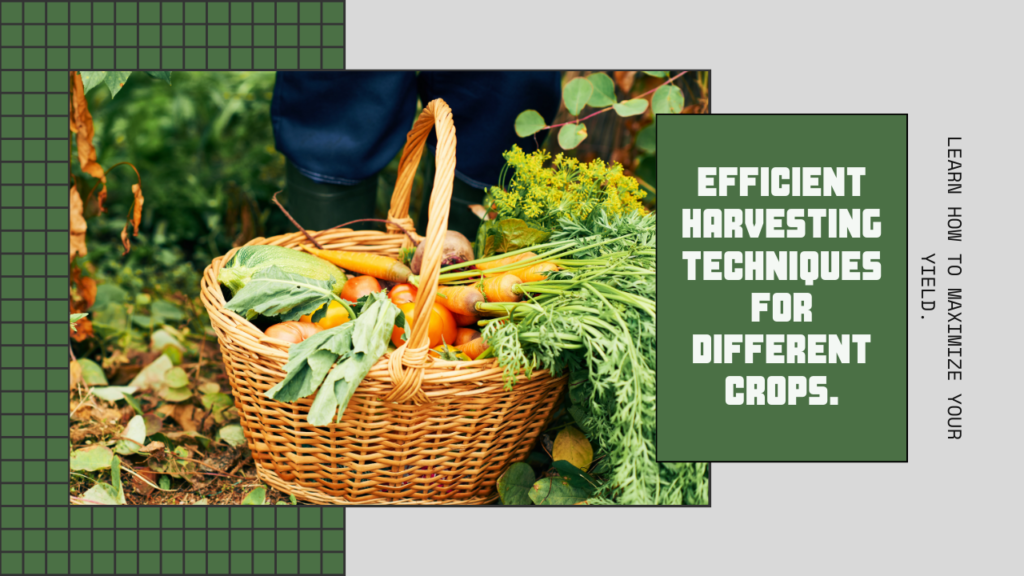
Harvesting techniques play a crucial role in maximizing the yield of different crops during the autumn harvest. Each crop requires specific methods to ensure efficient harvesting. In this section, we will explore various techniques and provide valuable tips to help you optimize your harvest for different types of crops.
1. Corn Harvesting Techniques
Harvesting corn involves a series of steps to ensure the best quality produce. Here are some efficient techniques:
- Wait until the corn ears are fully mature, indicated by dry and brown husks.
- Use a sharp knife or corn picker to remove the ears from the stalk.
- Avoid damaging the stalks or causing unnecessary shattering of corn kernels.
- Store the harvested corn in a cool and dry place to maintain its freshness.
2. Tomato Harvesting Techniques
Tomatoes require careful handling to prevent bruising or damage. Follow these techniques for efficient tomato harvesting:
- Harvest tomatoes when they have reached their mature color, which varies depending on the variety.
- Hold the stem between your thumb and forefinger and gently twist to detach the tomato from the vine.
- Avoid pulling or yanking the tomatoes, as it may damage the plant or other fruits.
- Place the harvested tomatoes in a shallow container or basket to prevent them from getting crushed.
3. Apple Harvesting Techniques
Apples should be harvested at the peak of ripeness to ensure optimal flavor and texture. Here are some efficient techniques:
- Twist the apple gently in an upward motion to detach it from the tree.
- Avoid dropping or throwing the apples to prevent bruising.
- Inspect each apple for blemishes or signs of disease before storing or consuming.
- Store apples in a cool environment with proper air circulation to maintain their crispness.
| Crop | Harvesting Technique |
|---|---|
| Corn | Wait until the corn ears are fully mature, use a sharp knife or corn picker to remove the ears from the stalk, avoid damaging the stalks or causing unnecessary shattering of corn kernels, store in a cool and dry place |
| Tomato | Harvest when they have reached their mature color, hold the stem and gently twist to detach from the vine, avoid pulling or yanking, place in a shallow container or basket |
| Apple | Twist gently in an upward motion to detach from the tree, avoid dropping or throwing, inspect for blemishes or signs of disease, store in a cool environment with proper air circulation |
By implementing these efficient harvesting techniques for different crops, you can ensure a successful autumn harvest and preserve the quality of your produce. Now let’s move on to the next section to discover essential tools that can further enhance your autumn harvest experience.
Ensuring Successful Preservation and Storage
To maintain the freshness and quality of your harvested produce, it is crucial to follow proper preservation and storage techniques. In this section, we will explore different methods for preserving your harvested produce and provide valuable insights to help you effectively store your crops.
The Importance of Proper Preservation
Preservation plays a vital role in extending the shelf life of your harvested produce. By employing the right methods, you can prevent spoilage, maintain flavor, and enhance the overall quality of your crops. Let’s delve into some effective preservation techniques:
- Canning: Canning is a popular preservation method that involves sealing produce in airtight jars or cans. This technique helps to retain the flavor and nutrients of the crops for an extended period. It is particularly useful for fruits, vegetables, and sauces.
- Freezing: Freezing is another effective method for preserving harvested produce. By rapidly freezing the crops, you can maintain their freshness and nutritional value. Proper packaging in airtight containers or freezer bags is essential to prevent freezer burn and maintain quality.
- Drying: Drying is a traditional method of preserving fruits, vegetables, and herbs. It involves removing moisture from the produce, which inhibits the growth of bacteria and mold. Dried fruits and vegetables can be stored in airtight containers or used in recipes.
- Dehydration: Dehydration is a more advanced preservation technique that involves removing moisture using specialized equipment. This method helps to retain the flavor, color, and nutritional value of the produce, making it ideal for long-term storage.
By choosing the right preservation method based on the type of produce, you can enjoy the flavors of your harvest throughout the year.
Proper Storage Techniques for Freshness
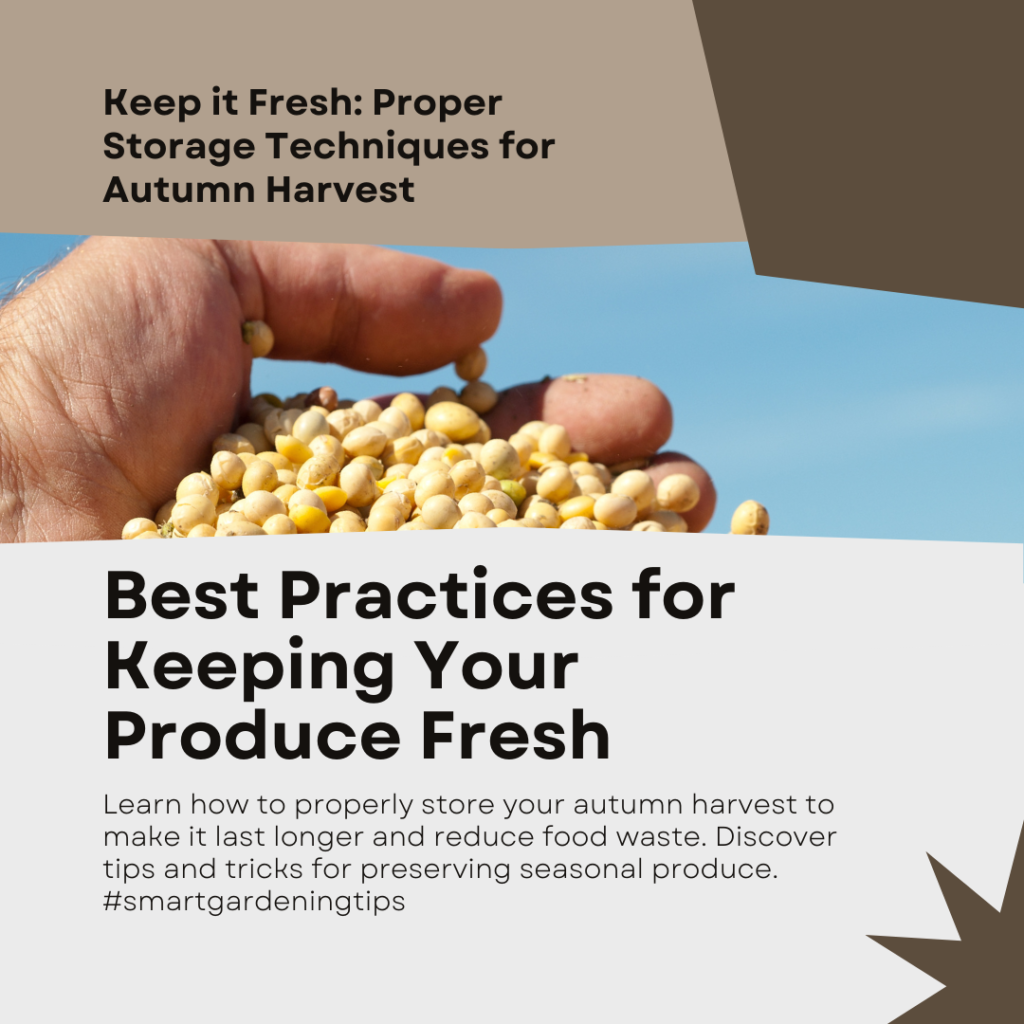
Aside from preservation methods, proper storage techniques are crucial for maintaining the freshness of your harvested produce. Here are some essential tips to follow:
- Temperature and Humidity: Most crops prefer cool temperatures and high humidity for optimal storage. Storing produce in a cool basement, cellar, or refrigerator can help extend its freshness.
- Avoiding Ethylene: Some fruits and vegetables release a natural gas called ethylene, which can accelerate the spoilage of other produce. Keep ethylene-producing crops, such as apples, away from ethylene-sensitive crops, such as leafy greens.
- Proper Packaging: Using breathable packaging, such as perforated plastic bags or paper towels, can help control moisture and prevent condensation. Avoid sealing produce tightly, as this can trap moisture and lead to spoilage.
- Separate Storage: Store different types of produce separately to prevent cross-contamination. Some crops release odors that can affect the flavor and quality of nearby produce.
By implementing these proper storage techniques, you can significantly extend the shelf life and maintain the freshness of your harvested crops.
Summary
Preserving harvested produce and storing it properly are essential steps to enjoy the fruits of your labor all year round. By utilizing methods such as canning, freezing, drying, and dehydration, you can prolong the shelf life and retain the flavor and nutrients of your crops. Additionally, following proper storage techniques, such as maintaining the right temperature and humidity, avoiding ethylene exposure, and using appropriate packaging, will help preserve the freshness of your produce. Remember, with the right preservation and storage practices, your autumn harvest can provide nutritious and delicious ingredients long after the season ends.
FAQ
Q. What is the significance of the autumn harvest season?
A. The autumn harvest season is a time when crops are ripe for harvesting, providing an abundance of fresh produce. It is a crucial time for farmers and gardeners to gather their crops before the onset of winter and ensure a sufficient food supply for the coming months.
Q. What are the ideal climate and conditions for a successful autumn harvest?
A. For a successful autumn harvest, it is important to have a mild climate with cool temperatures and ample sunlight. The soil should be well-drained and properly irrigated to support healthy crop growth. Additionally, frost-free conditions and minimal rainfall are favorable during this season.
Q. How do I choose the right crops for autumn harvest?
A. When selecting crops for autumn harvest, it is important to consider their cold tolerance and maturity time. Choose crops that can withstand cooler temperatures, such as root vegetables, leafy greens, and certain fruits. Additionally, opt for crops with shorter maturity times to ensure they can be harvested before the first frost.
Q. What is the optimal timing and planning for achieving the best yields during autumn harvest?
A. Timing is crucial for a successful autumn harvest. Start by determining the first expected frost date in your area and count backward to calculate the ideal planting time for each crop. It is also important to stagger the planting of different crops to ensure a continuous harvest throughout the season.
Q. How do I prepare the soil for autumn planting?
A. To prepare the soil for autumn planting, begin by removing any weeds or debris. Next, loosen the soil with a garden fork or tiller to improve drainage and aeration. Incorporate organic matter, such as compost or well-rotted manure, to enrich the soil with nutrients. Finally, level the soil surface and remove any large clods or stones.
Q. What are some techniques for maintaining soil health during the harvest season?
A. During the harvest season, it is important to take steps to maintain soil health. Avoid overwatering to prevent waterlogging and promote root rot. Implement a crop rotation plan to minimize nutrient depletion and control pests and diseases. Additionally, apply organic mulch to conserve moisture, regulate soil temperature, and suppress weed growth.
Q. What are some efficient harvesting techniques for different crops?
A. Efficient harvesting techniques vary depending on the crop. For leafy greens and herbs, you can use a sharp knife or scissors to cut the outer leaves or stems, leaving the central portion intact for regrowth. For root vegetables, gently dig around the plant with a garden fork and lift them out. For fruits, use pruning shears or a gentle twisting motion to detach them from the plant.
Q. What are some essential tools for a successful autumn harvest?
A. The tools required for a successful autumn harvest vary depending on the crops you are harvesting. However, some essential tools include pruners, scissors, garden forks, trowels, harvest baskets or crates, and a sharp knife. These tools will help you efficiently and safely gather your crops without damaging them.
Q. What are some methods for preserving harvested produce?
A. There are several methods you can use to preserve harvested produce. Common preservation techniques include canning, freezing, dehydrating, and pickling. Each method has its own set of instructions and requirements, so it is important to research and follow proper guidelines for the specific crop you are preserving.
Q. What are some proper storage techniques to maintain the freshness of harvested produce?
A. To maintain the freshness of harvested produce, store them in a cool, dry, and well-ventilated area. Some crops, like root vegetables, can be stored in a cellar or basement. Leafy greens can be stored in the refrigerator with a damp cloth to maintain moisture. Fruits, on the other hand, may require different storage conditions, such as being kept at room temperature or in the refrigerator depending on their ripeness and type.
Conclusion
In conclusion, achieving a bountiful autumn harvest requires careful planning and implementation of the best practices discussed in this article. By selecting the right crops that thrive during the autumn season, timing their planting appropriately, and maintaining the health of your soil, you can optimize your yields and ensure a successful harvest.
Additionally, efficient harvesting techniques and the use of appropriate tools play a crucial role in maximizing your productivity. By following expert recommendations and employing proper preservation methods, you can store your harvested produce effectively, maintaining its freshness and extending its shelf life.
Remember, the key to a successful autumn harvest lies in continuous learning and improvement. Stay updated with the latest research and technological advancements to enhance your understanding and application of effective agricultural practices. By doing so, you can unlock the secrets to a flourishing autumn harvest and enjoy the fruits of your labor throughout the season.





